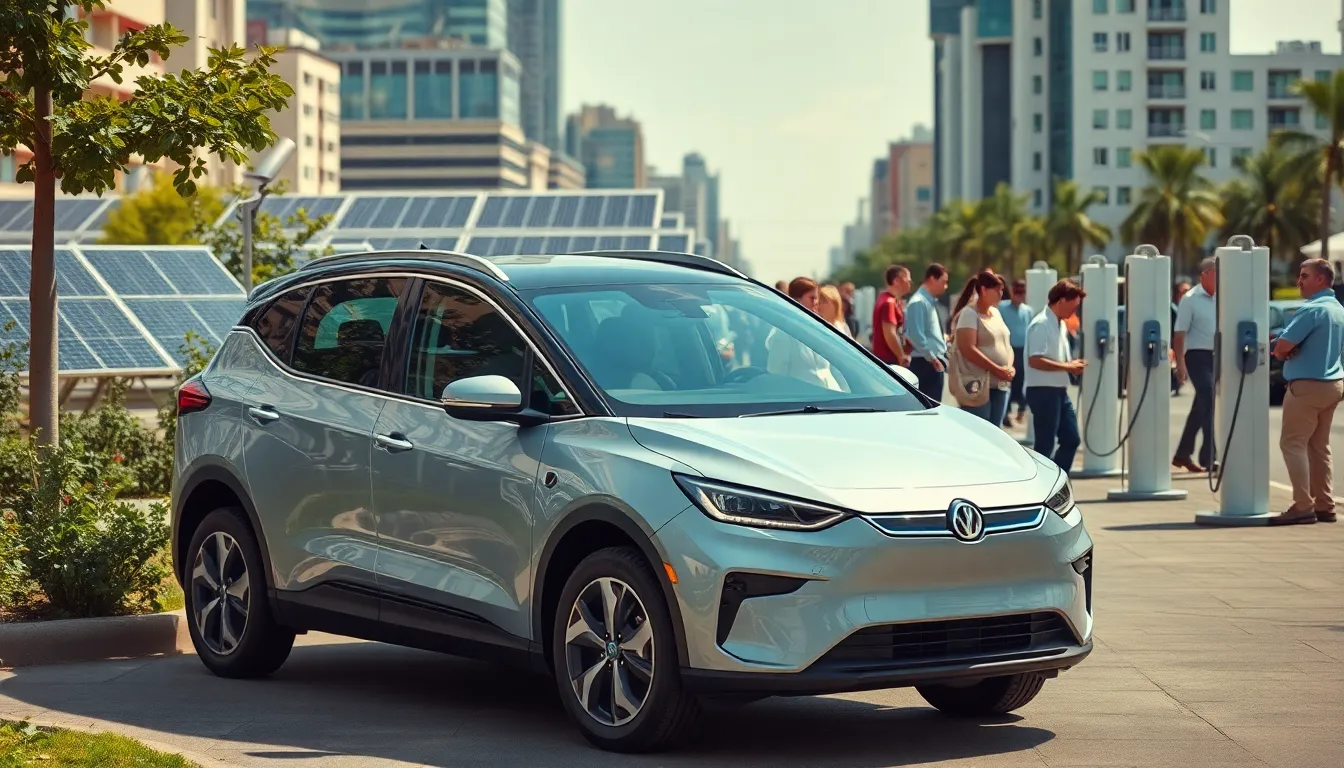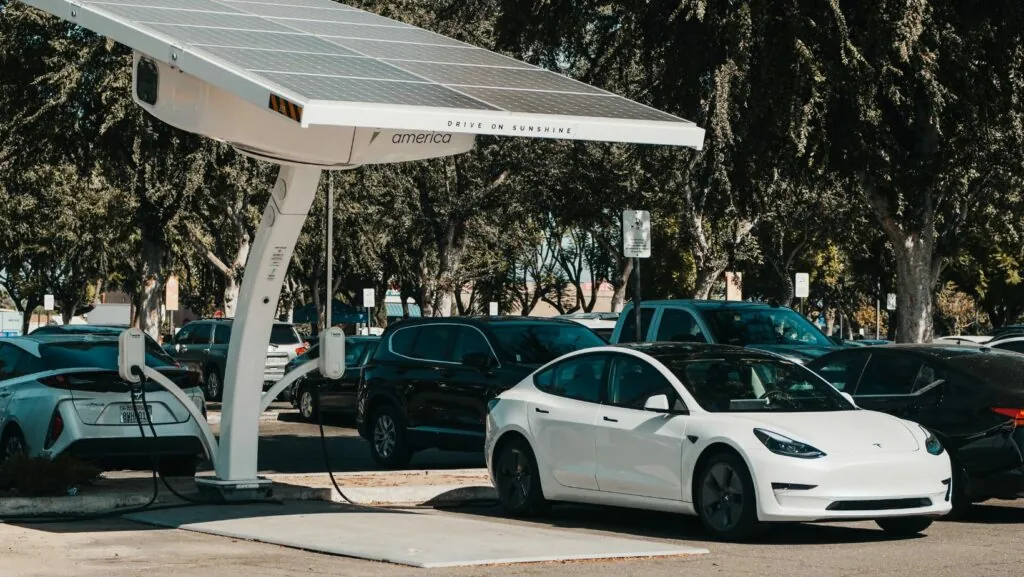The electric vehicle revolution is charging ahead, and it’s not just the usual suspects leading the way. Emerging EV markets are popping up like mushrooms after a rainstorm, ready to shake things up in the automotive world. Who knew that countries you might struggle to find on a map are now at the forefront of innovation and sustainability? It’s like watching a high-stakes game of musical chairs—only this time, everyone wants to sit in the eco-friendly seat.
As global demand for cleaner transportation grows, these markets are proving they can keep pace with industry giants. From solar-powered sedans to electric scooters zipping through bustling streets, the future of mobility is bright and electrifying. Buckle up as we explore how these emerging players are not just keeping up but are set to redefine the road ahead.
Table of Contents
ToggleOverview of Emerging EV Markets
Emerging electric vehicle markets are redefining the automotive landscape. Countries like China, India, and Brazil are at the forefront of this transformation. Each nation showcases unique innovations that cater to local needs, making the adoption of EVs more accessible.
China leads in EV production, with over 50% of global electric vehicle sales occurring there in 2022. This dominance stems from substantial investments in EV infrastructure and government incentives that promote cleaner transportation. Meanwhile, India is developing a strong foothold, launching initiatives that encourage the use of electric two-wheelers and public transportation options, aligning with its extensive urbanization efforts.
Brazil offers a different perspective, focusing on biofuels and electric solutions for its vast agricultural sector. Local manufacturers are producing electric tractors and utility vehicles tailored to specific market demands. Each country demonstrates a commitment to sustainability, leveraging indigenous resources for greener transportation.
Regional partnerships play a pivotal role in the growth of these markets. Collaborative efforts among governments, industries, and startups facilitate technology transfer and innovation sharing. Various trade agreements provide the platform for cross-border investments that revitalize the EV sector.
Diverse mobility solutions beyond passenger cars are emerging as well. Electric buses, scooters, and bikes are gaining popularity, encouraging a shift toward shared mobility systems. Each adaptation reflects a response to urban challenges like congestion and pollution.
Emerging markets are poised to shape the future of transportation, challenging established automotive giants. Their ability to innovate and adopt sustainable practices sets a foundation for a cleaner, more efficient global automotive industry.
Key Drivers of Growth

Emerging electric vehicle (EV) markets are witnessing substantial growth driven by several key factors. Increased demand for sustainable transport options significantly influences market dynamics, as consumers prioritize cleaner alternatives.
Technological Advancements
Innovations in battery technology enhance EV performance and affordability. Improvements in energy density and charging speed attract consumers, making electric vehicles more appealing. Manufacturers in countries like China aggressively invest in R&D, leading to better energy solutions. Companies also explore wireless charging and vehicle-to-grid technology, further enhancing the EV user experience. These advancements not only optimize the driving range but also support renewable energy integration, pivotal for future growth.
Government Policies
Supportive government policies play a critical role in the expansion of emerging EV markets. Incentives such as tax rebates and subsidies encourage consumers to choose electric vehicles over traditional options. Regulatory frameworks mandating emissions reductions strengthen this shift. For example, India’s focus on electric two-wheelers boosts local manufacturing and creates jobs. Brazil’s initiatives to incorporate biofuels alongside electric technology in agriculture highlight the versatility of emerging markets. Policies promoting public transport electrification further illustrate government commitment, fostering a sustainable transportation ecosystem.
Major Players in the Market
Emerging electric vehicle (EV) markets feature a blend of traditional and new firms driving innovation and growth. Countries like China, India, and Brazil showcase a diverse array of contributors.
Established Automakers
Renowned manufacturers continue to adapt to the shift towards electric mobility. Companies such as Volkswagen, General Motors, and Toyota significantly invest in EV technology and production capacities. Volkswagen aims to launch multiple electric models by 2025, targeting over 1 million sales annually. General Motors focuses on expanding its electric fleet, committing to an all-electric future by 2035. Toyota invests in hybrid and battery technologies, maintaining leadership in both segments while slowly transitioning towards full electrification.
New Entrants and Startups
New players are reshaping the EV landscape with innovative strategies. Companies like NIO, Rivian, and Xpeng revolutionize consumer expectations through cutting-edge designs and advanced technology integration. NIO introduces the battery swap model, enhancing convenience for users. Rivian targets the electric truck market, combining adventure with sustainability. Xpeng focuses on autonomous driving features, appealing to tech-savvy consumers. These startups leverage fresh ideas and agility to carve niches within the evolving market.
Regional Insights
Emerging EV markets are shaping the global automotive landscape with distinctive developments across regions. Each area presents unique characteristics, driving factors, and challenges.
North America
North America is rapidly expanding its EV landscape. The United States accounts for a significant share of global EV sales, with over 5 million electric vehicles registered in 2022. Companies like Tesla lead the charge, but traditional automakers like Ford and General Motors are intensifying their focus on electric models. Government initiatives such as the Inflation Reduction Act provide incentives for consumers, enhancing EV adoption. Additionally, investments in charging infrastructure are pivotal for supporting widespread use.
Europe
Europe showcases a strong commitment to sustainable transportation. The European market accounted for approximately 30% of global EV sales in 2022, driven by countries like Norway, Germany, and France. Regulations like the Euro 7 standards push automotive manufacturers toward emissions reductions. Investment in renewable energy sources and charging network expansions further catalyze growth. Additionally, prominent brands such as Volkswagen and BMW innovate continuously, introducing various electric models to meet rising consumer demand.
Asia-Pacific
Asia-Pacific emerges as a dominant region for electric vehicles. China, leading in global EV production, surpassed 6 million sales in 2022. The government’s ambitious policies, including the dual credit system, strengthen the sector’s growth. India focuses on electric two-wheelers and public transit as primary solutions to urban congestion. Countries like Japan are exploring advanced technologies such as solid-state batteries. Collaborative efforts within the region promote innovation and sustainability, enhancing the overall EV ecosystem.
Challenges Facing Emerging EV Markets
Emerging electric vehicle markets face significant challenges that can hinder growth. These obstacles include infrastructure development and consumer adoption issues.
Infrastructure Development
Infrastructure development plays a vital role in supporting EV market growth. Charging stations must become more widespread to accommodate the increasing number of electric vehicles. Countries like India and Brazil need extensive investments in charging networks to make EV ownership feasible. Additionally, inadequate power supply limits the effectiveness of charging infrastructure in some regions. The establishment of partnerships between governments and private enterprises presents a potential solution for overcoming these development gaps. Innovative approaches such as solar-powered charging stations can enhance sustainability while addressing infrastructure shortages.
Consumer Adoption
Consumer adoption remains a critical hurdle for emerging EV markets. High purchase prices deter many potential buyers, especially in countries where average incomes are low. Incentives from governments can help mitigate these costs, making electric vehicles more accessible. Awareness campaigns can also improve understanding of the benefits of EVs, including lower operating costs and environmental advantages. Many consumers express concerns about range anxiety, influenced by the limited availability of charging stations. Educational initiatives that emphasize advancements in battery technology and infrastructure improvements can help assuage these fears and encourage greater adoption.
The rise of emerging EV markets signals a transformative shift in the global automotive landscape. Countries like China, India, and Brazil are not just participating but leading the charge toward sustainable transportation solutions. Their innovative approaches and unique contributions are reshaping consumer expectations and industry standards.
As technological advancements continue to drive down costs and enhance performance, the potential for electric mobility solutions expands. This evolution is supported by government policies and regional collaborations that foster growth and infrastructure development.
While challenges remain, the commitment of both established automakers and ambitious startups ensures that the future of electric vehicles is bright. The momentum in these emerging markets is setting the stage for a more sustainable and efficient transportation ecosystem worldwide.




